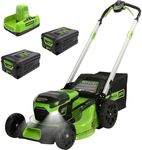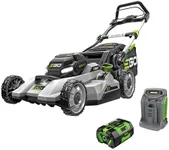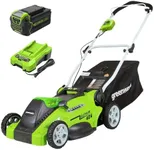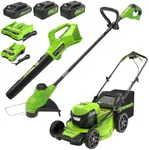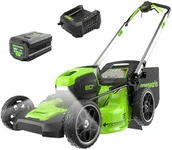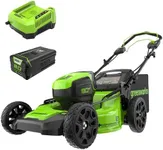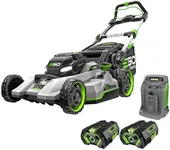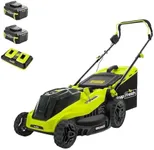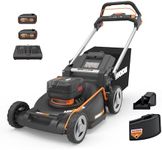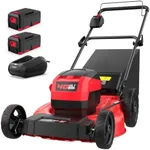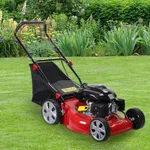Buying Guide for the Best Lawn Mower For Small Yards
Choosing the right lawn mower for a small yard can make your lawn care routine much easier and more efficient. When selecting a lawn mower, it's important to consider the size of your yard, the type of grass you have, and your own physical capabilities. By understanding the key specifications and features, you can find a mower that fits your needs perfectly and keeps your lawn looking great with minimal effort.Type of MowerThere are several types of lawn mowers, including push reel mowers, electric mowers, and gas-powered mowers. Push reel mowers are manual and eco-friendly, making them ideal for very small yards and those who want a quiet, low-maintenance option. Electric mowers, which can be corded or cordless, are easy to start and maintain, and are suitable for small to medium-sized yards. Gas-powered mowers are more powerful and can handle thicker grass, but they require more maintenance and produce more noise and emissions. Choose the type that best matches your yard size, grass type, and personal preferences.
Cutting WidthThe cutting width of a lawn mower refers to the width of the strip of grass it cuts in a single pass. For small yards, a cutting width of 14 to 20 inches is usually sufficient. A narrower cutting width means more passes to mow the entire yard, but it can also provide better maneuverability in tight spaces. If your yard has many obstacles or narrow areas, a smaller cutting width may be more practical. Conversely, if your yard is relatively open, a wider cutting width can reduce the time spent mowing.
Power SourceLawn mowers can be powered by electricity (corded or battery), gas, or manual effort. Electric mowers are quieter and require less maintenance than gas mowers, making them a good choice for small yards. Corded electric mowers offer unlimited run time but require access to an electrical outlet and can be limited by the cord length. Battery-powered mowers provide more freedom of movement but have limited run time and require recharging. Gas mowers are more powerful and can run longer, but they are noisier and require more maintenance. Consider your yard size, access to power sources, and preference for maintenance when choosing the power source.
WeightThe weight of a lawn mower can affect how easy it is to push and maneuver, especially in a small yard with tight corners or slopes. Lighter mowers, such as push reel and electric models, are easier to handle and require less physical effort. Heavier mowers, like gas-powered models, may offer more stability and power but can be more challenging to maneuver. If you have physical limitations or prefer a more effortless mowing experience, opt for a lighter mower.
Height AdjustmentHeight adjustment allows you to change the cutting height of the mower blades to suit different grass types and growth conditions. This feature is important for maintaining a healthy lawn, as different grass species thrive at different heights. Most mowers offer multiple height settings, typically ranging from 1 to 4 inches. For a small yard, look for a mower with easy-to-use height adjustment controls, so you can quickly adapt to changing grass conditions and achieve the best cut for your lawn.
Grass Clipping ManagementGrass clipping management refers to how the mower handles the grass clippings it generates. Common options include bagging, mulching, and side discharge. Bagging collects clippings in a bag for easy disposal, keeping your lawn tidy but requiring frequent emptying. Mulching finely chops the clippings and returns them to the lawn, providing natural fertilization and reducing waste. Side discharge ejects clippings out the side of the mower, which can be less tidy but is suitable for less manicured lawns. Consider your preference for lawn appearance and maintenance when choosing a mower with the appropriate clipping management option.
